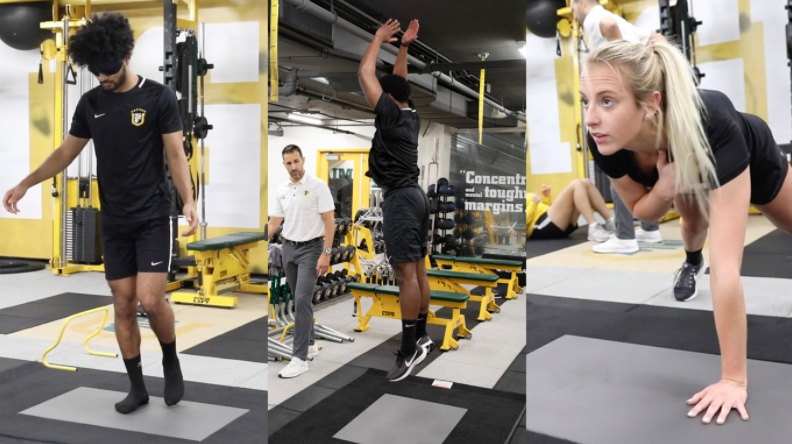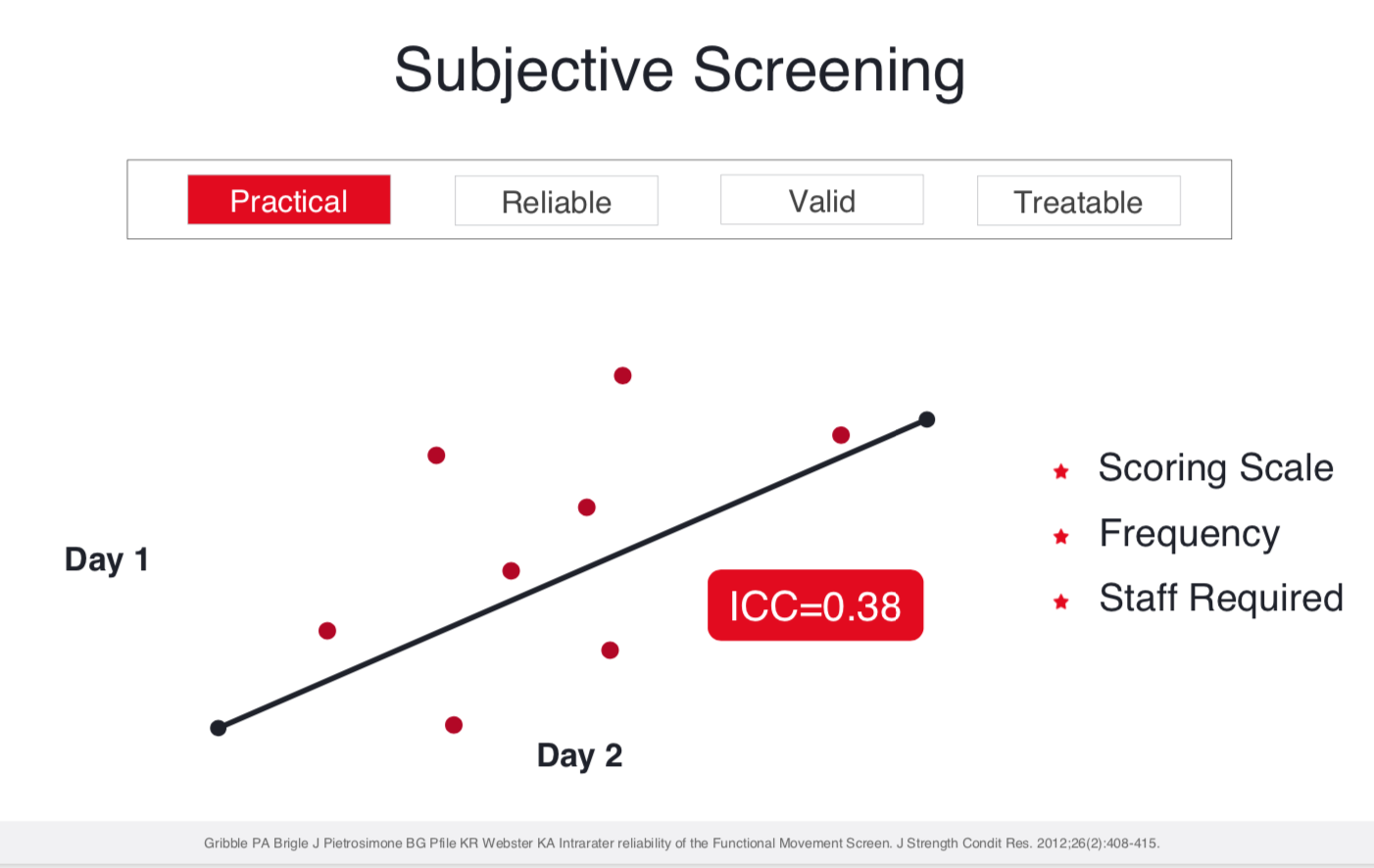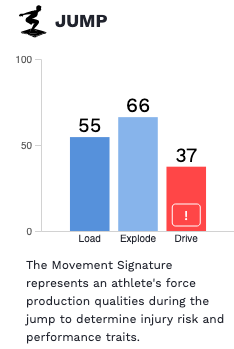
In the world of sports science and technology today the word “actionable” comes up quite frequently. It’s not as catchy as “movements over muscles,” but we still see it thrown around social media. We have often used the word “treatable” to keep things simple because we all want to be treated based on the correct diagnosis. After all, what is an assessment worth if you can’t get the plan to correct it? Would you still go to the doctor if you knew they would not give you medicine, or a prescription?
Because of its objectivity and reliability, the force plate serves as the gold standard for determining an individual’s needs by looking at ground reaction force to determine how each individual sequences – and where they tend to compensate during movement. By removing the human element and relying on technology, this greatly improves the accuracy of the diagnosis.

We are not saying that subjective assessments are not worth your while (completely), however, you must consider the practicality and reliability of any assessment before spending a days time on evaluating a handful of athletes. With a common assessment such as the FMS, you must ask yourself, are you scoring the test the same as other staff members? Are you scoring it the same at 8 pm that you do at 8 am? Studies have actually shown that the more skilled the coach evaluating the test, the harder it is to pass. The theory here is that a more skilled coach just happens to see more wrong than a young untrained eye. The problem is that both are scoring it.
There are many tools other than force plates that can help with this needs analysis, however, it is important to consider the objectivity, validity, and reliability of any evaluation method before continuing to spend precious time on it.
Once an assessment or evaluation has been done, it’s time to provide treatment for each individual. This framework is usually based around a specific goal like being prepared for a season or competition. This sounds pretty simple, but programming is really just another name for periodization. However, the difficulty comes in making the plan both realistic and sustainable. This can be a challenge because we all have a history tied to something that may or may not have benefitted us in our training, or beliefs as a practitioner.
By using the objective diagnosis as a starting point, you can begin to put together programming that will benefit the individual. Remember, everything (not just a few pieces) needs to be in place to improve the health and performance of the individual, not just to cover bases. Just as practitioners, athletes don’t have time to be wasted.

If we are going to write a prescription for the athlete above (55-66-37) we would want to address their most deficient variable first (Drive). This type of individual tends to have no issue creating force (Load) or transferring it (Explode). Where they seem to struggle is applying that force production for a longer duration, which is where we will start. And when I say we, I am referring to machine learning which will shuffle through hundreds of thousands of data points to select the proper stimulus for this individual.
In our research published in the Journal of Strength and Conditioning Research, we have found that an exercise like the RFESS (rear foot elevated split squat) works really well at having the individual produce force for longer durations all while really emphasizing the posterior chain. This exercise will often be paired with a jump focusing on the same qualities. We have found that a broad jump does just that. Both of these movements combined have been shown to increase the area under the force-time curve, impulse.

So before I put my athlete on a steady diet of Squats and Deadlifts (both have been shown to improve Load and Explode), which I really love doing (because they’ve worked for me), I should realize that this individual may have different needs than I do. This is where I have to take the ego or bias out of my programming, which is sometimes the most difficult thing to do for anyone in this field. A proper measurement showing the individual’s unique movement patterns, along with conversations regarding previous injury history is a great place to start before throwing in sets and reps.
Probably the best field to look at is medicine. Medicine doesn’t just hand out multiple prescriptions hoping that one of them will improve the problem. On average, there are 8 steps taken before they hand out a Rx slip (1), which involves multiple questions about background, truly defining the issue, specifying the therapeutic objective, etc. Training should be no different, and this is where strength and conditioning continues to miss the boat!
Writing a “well-balanced” program to cover all your athletes sounds like a good plan in theory, but how many of those athletes actually walk into your facility well-balanced to begin with? Objectively assessing athletes will improve the reliability of your assessment and eliminate any personal biases from the past – but providing treatment, or programming to impact them immediately is the ultimate goal and why that individual ever stepped into your facility to begin with.
1. Pancholi M, Stagnitti M. Outpatient prescribed medicines: a comparison of use and expenditures, 1987 and 2001. Statistical Brief #33. Rockville, Md.: Agency for Healthcare Research and Quality, June 2004.